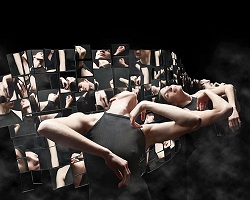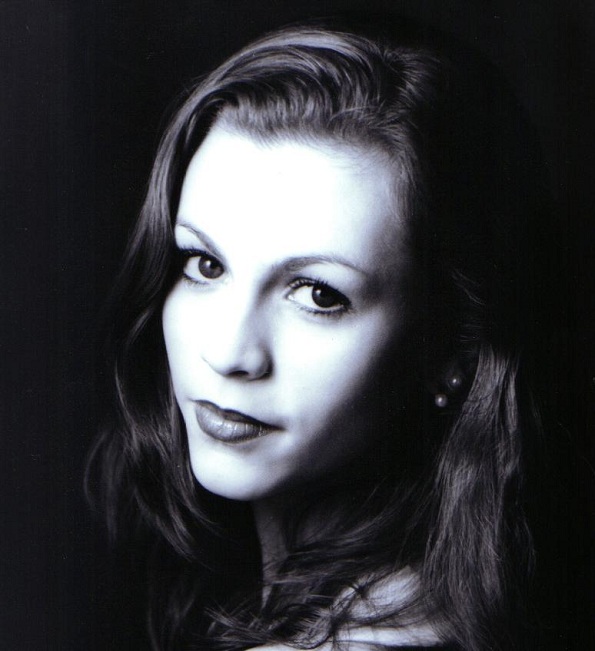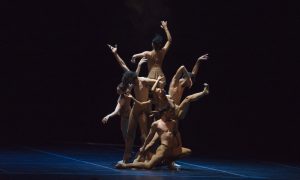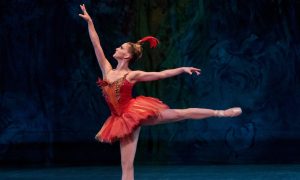Insights from Company Dancer Brittany Fridenstine
By Stephanie Wolf
Manhattan based dance troupe Morphoses challenges the norms of a ballet company setting. In the wake of Christopher Wheeldon’s departure, director and co-founder Lourdes Lopez opted to forego the typical formula of having a sole, permanent artistic director. Instead, Morphoses created a “Resident Artistic Director” position; enlisting a new artistic leader for each performance season.
In the midst of her first season with the company, NYC freelance dancer Brittany Fridenstine gave Dance Informa a glimpse into Morphoses’s residency at Martha’s Vineyard and working with the current Resident Artistic Director Luca Veggetti.
At age nine, Brittany began training intensively at the Pacific Northwest Ballet School in Seattle, WA. Her professional life began at the Pittsburgh Ballet Theater and she went on to dance with Ballet Memphis, Minnesota Dance Theatre, the James Sewell Ballet, and American Repertory Ballet. Her freelance career has led her to work with Terpsicorps Dance Theater, Burklyn Ballet Theare, Terra Firma Dance Theatre, Chamber Dance Project, and National Choreographers’ Initiative.
Brittany enjoyed three rich weeks of artistic exploration with Morphoses at Martha’s Vineyard, as the company prepared for performances of Luca Veggetti’s new ballet Bacchae at the Joyce Theater, NYC, which premiered October 25, 2011.
Describe your time at the Vineyard. What was your typical daily schedule like?
We were housed in a beautiful, enormous home, which has 15 private bedrooms with bathrooms. There was a communal eating and sitting area, and 2 dance studios. Across a garden was another building with 2 more studios, plus a pilates and workout space. It was a beautiful sanctuary to get immersed in a creative process.
We began class at 10am [every day]. Lourdes Lopez, the director of Morphoses, alternated with our ballet mistress Eve Lawson. We went right into rehearsals from 11:30am – 2:30pm and then breaked for lunch. Then we resumed 3:30 – 4pm for cleaning, and usually continued with other tasks until 6.

Morphoses presents Bacchae
Is this your first time working with Luca Veggetti?
I met Luca in 2005 at the National Choreographers’ Initiative. I was selected to perform in his piece and instantly loved the intensity of his movement. I kept in touch with him and his career and had an opportunity to do a solo improvised performance that he staged in Saarbrucken, Germany and Bologna, Italy. Later, I did another structured improv event with Luca at the Austrian Embassy in NYC, accompanied by our current, and amazing, flautist Erin Lesser.
How much studio time did you have with Luca at Martha’s Vineyard?
I am dancing ensemble work and we typically had 4 to 5 hours with Luca. The lead dancers had about 2 to 3 hours.
What is the creative process with Luca like? How did it differ from the last time you worked with him?
Luca is very exacting. He has a specific movement language, which places more importance on energetic flow than on shapes. There are numerous moments of suspension, sometimes halting, then quick re-entry to a flow. It requires great awareness of every part of your body all at once, and he wants it perfect immediately.
In the past, I utilized more improvisation with Luca. With this experience, there was more staged material, but he still demands it have the feeling of improv. It has been amazing to work with the other dancers who are extremely talented and unique.
Tell me more about the community amongst the dancers.
The dancers are all amazing artists. We have fostered an environment of mutual admiration and respect. At the Vineyard, we were all forced to spend every hour together, but I think we all loved it. I hope to work with all of them again. It will be sad when I don’t see them every day.
Can you describe Luca’s new ballet Bacchae?
The ballet is based abstractly on the tale of Bacchae, the Greek God Dionysius’s struggle between rationality and irrationality. We have a stage within a stage. There is a platform, utilizing specific technology to make sounds out of our movement. This creates another live element to the production. Our movement is part of the music and each show is slightly different. There is a puppeteer and puppet in the show and an amazing flautist, who interacts with the dancers. Additionally, the dancers all have text.














Pingback: Morphoses dance | Ghyou